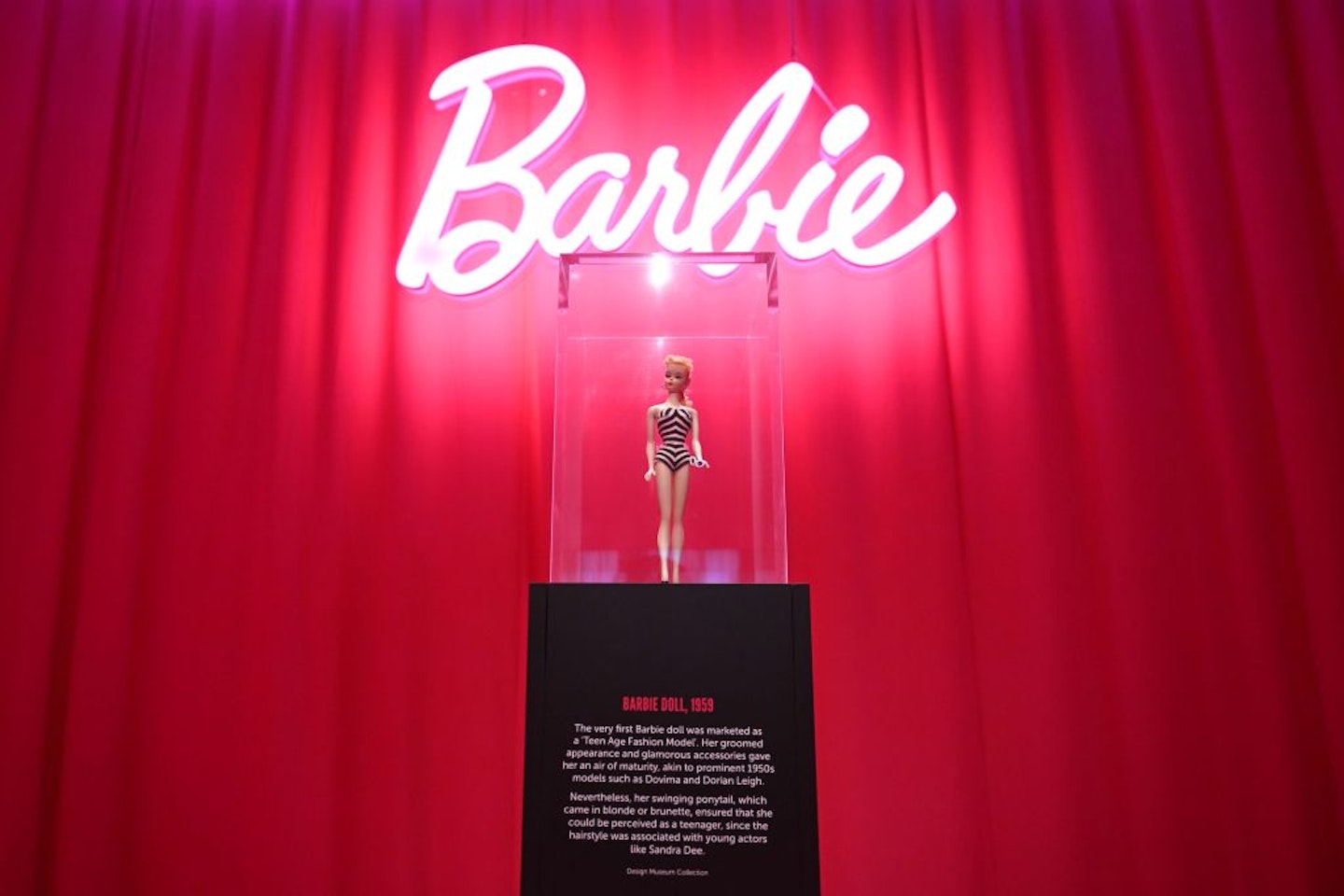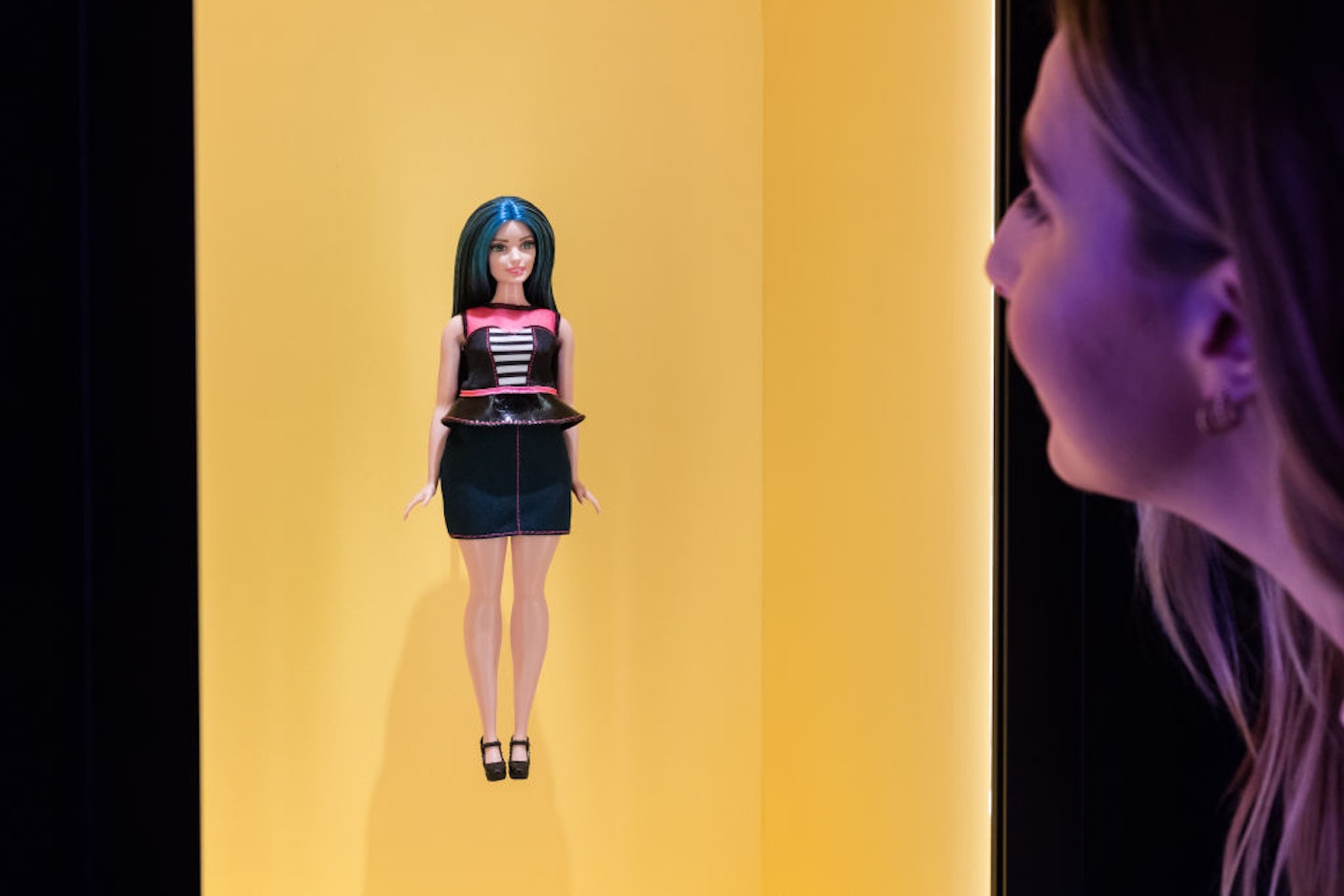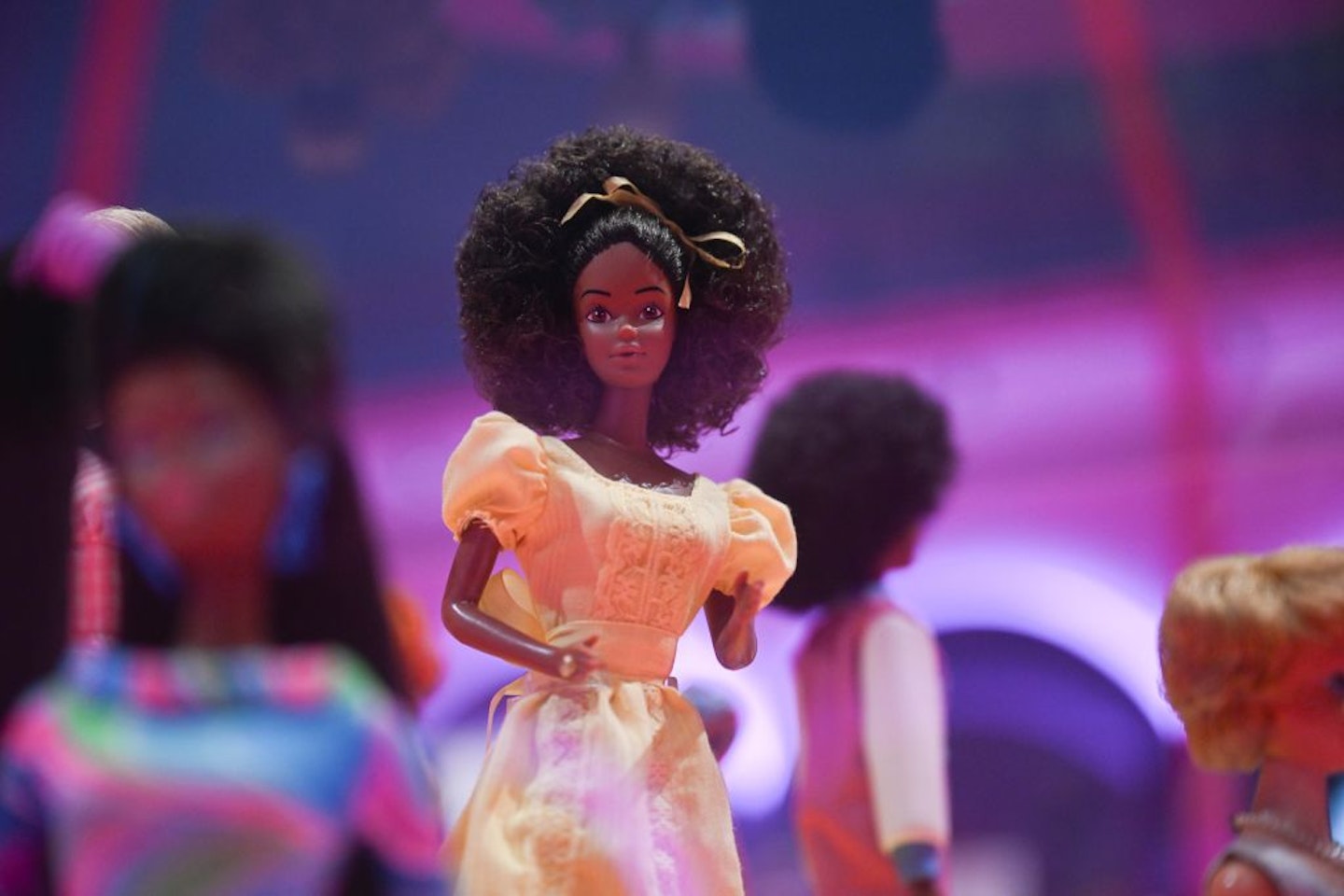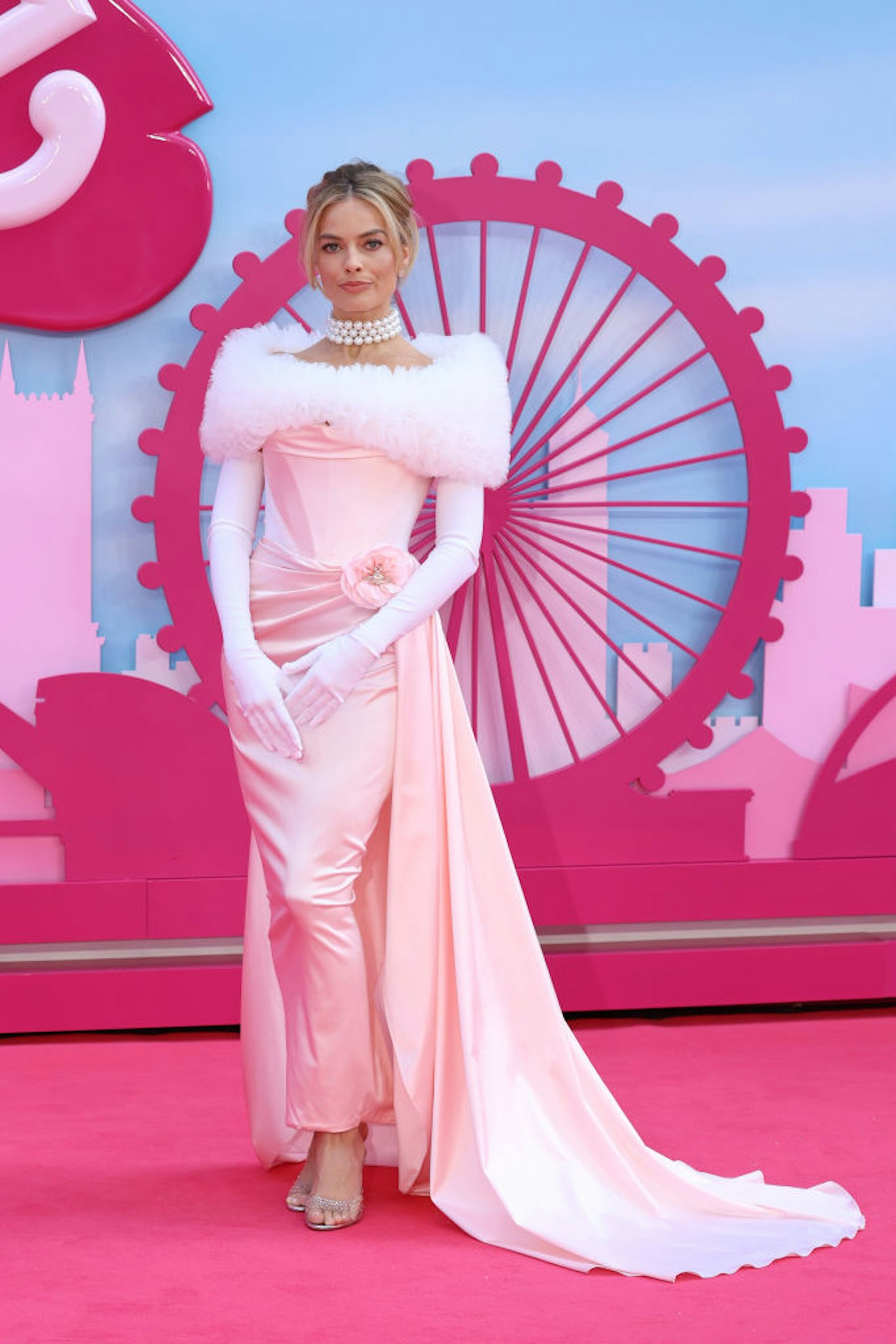For many Gen-X and millennials, Barbie was a regular lodger in childhood bedrooms – be it meticulously displayed on shelves or shoved under the bed. Dressed in leg warmers and spandex, bridal gowns or nurses outfits, Barbie was the doll who could take on a million lifetimes in just one single playtime.
20 years ago, to describe yourself as a Barbie-loving feminist may have raised a few eyebrows. In 2024, after Barbiemania turned the world pink, the iconic doll garners nothing but admiration.
Now, Kim Culmone, Senior Vice President and Global Head of Dolls Design at Mattel (the brand behind Barbie), opens up to Grazia about the secret to the doll’s success – and exactly how the brand has changed over the years, becoming one of the toy world's most inclusive offerings.
Kim spoke to Grazia ahead of the opening to Barbie: The Exhibition, the Design Museum’s new show marking Barbie’s 65th anniversary. You read that right: 65 years. Although perpetually young and beautiful, Barbie has been on their Earth even longer than some of us.
‘The exhibition is incredible,’ Kim says. ‘I was very moved standing in front of the very first Barbie when you first walk in, and she’s rotating slowly under this beautiful spotlight. Toy brands usually don’t last 65 years. Barbie’s ability to remain both timely and timeless is the key to her success, and that key is about continually evolving to connect with today’s generation of families and kids.’

For decades, though, the doll has been dogged with criticisms. Body image expert Marci Warhaft-Nadler wrote in The Body Image Survival Guide for Parents that Barbie perpetuates the message that 'you can do anything and you can be anything – as long as you look like this: very tall, very thin, very Caucasian, and very beautiful.’ In fact, many parents have questioned in recent years whether buying their child a Barbie could be reinforcing some problematic stereotypes.
Opening up about the brand’s shift in recent years, Kim says, ‘I took the position of Head of Design for Barbie in 2013, and one of the first things that I did was turn to my team and ask, "If you were [the creator] Ruth Handler and you were launching the brand today to inspire the limitless potential in every girl, what might she look like? Do you feel like we’re living in that truth as accurately and progressively as we could?" The answer was no. We knew that we could do better.’
‘We received feedback that perhaps parents weren’t as proud to gift a Barbie as we would like them to be, or that there were parts of the brand that weren’t resonating. Rather than putting our heads in the sand and thinking people just aren’t getting us, we set about to really evolve what we were doing.’
And evolve Mattel did. In 2015, Kim led the design of the most ethnically diverse doll line in the brand’s history, including the introduction of three new doll body types – curvy, petite and tall. She oversaw the design of the Creatable World, the first gender-inclusive doll line, challenging perceptions of what a doll could be. Step foot into a toy shop and you’ll be faced with far more than your typical blonde bombshell – including Barbies in wheelchairs, and those wearing hearing aids.


As Kim notes, Barbie has always broken barriers. ‘The first Black doll was in 1968, and the first Black doll called Barbie was in 1980. Barbie always had diversity and representation, but the level just increased rapidly around 2015/2016,' she explains.
‘The introduction of body diversity was something we weren’t sure would be successful, but I’m so grateful it was. I think it’s powerful to see yourself represented in the world around you – especially in an iconic brand. Most people come to Barbie in their childhood, and that’s a very formative time that parents welcome us into their homes. It’s our responsibility to evolve in way that’s inclusive.’
The world has long mulled over Barbie’s impact, and the discourse only grew following Greta Gerwig and Margot Robbie’s live-action movie. Released last July, Barbie grossed $365 million at the box office in its opening weekend alone. With mother-daughter relationships, feminist speeches, and a first gynaecologist appointment, plenty of tears were shed throughout the film’s 114 minutes.
Kim tells Grazia, ‘We’d been talking about doing a film practically since I joined the company, so to see it finally coming to life was incredible. The first step was choosing the right partner, which we did in Greta and Margot, who came with such reverence for the brand and respect for us as a creative partner. They pushed the boundaries on what might make us comfortable and uncomfortable at times, but we knew that we could trust them.'
The film’s success wasn’t just down to stellar casting, clever marketing, or an unwavering call to childhood nostalgia. Pink hit the high street, ‘Kenergy’ worked its way into our everyday syntax, and not a trip to the ladies room took place without a ‘Hi Barbie’ hollered out. The film’s feminist message can’t be ignored: girls can do anything.
‘I had the privilege of reading the script in advance and I spent a lot of time thinking, oh gosh, how is this going to land?' Kim says. 'I knew that it would touch our avid collectors… But this type of cultural phenomenon? Even I was surprised at how much people celebrated with us. I feel very proud of the film. I think the changes we made on the brand allowed a story to be told that might have been more difficult to accept prior to those shifts.’

Constant changes have turned the brand into something we love, yet still recognise. Unlike dolls that were ‘too expensive’ to be roughhoused in the sticky hands of children, Barbie’s financial accessibility meant she was a toy as soon as she came out of her plastic-tagged box. With their congregation of dolls, children married them off, sent them to schools, oftentimes chewed off limbs, and held more than one orgy, too. Change her outfit, cut her hair, and turn her into whatever 'Weird Barbie' you want.
"What you buy for your child is a very personal choice."
‘I and my team design dolls with all their accessories, but the real magic happens when the child takes Barbie out of the box and begins to create their own storytelling,’ says Kim. ‘That’s powerful. As a child, you may not have a lot of agency over what you’re doing or how your day goes. With Barbie, you’re the director of your own film. That world of imagination is a really precious place to be.’
However, it can’t be ignored that some parents are still concerned over whether to welcome Barbie into their homes. Those of us who grew up longing for the doll’s picture-perfect body are now deciding how to raise the next generation. Changes have been made, but has Barbie evolved enough for worried parents to open their purses?
When asked about her advice for those who are unsure on whether to buy a Barbie for the kids in their life, Kim replies, ‘What you buy for your child is a very personal choice. There are enormous benefits that we academically know are sparked in kids. While people might not be sure about a particular toy and whether it’s “good” for their children, doll play leads to better social interaction. The most important thing is to support what your child is interested in.'
'I’ve always viewed Barbie through the lens of a feminist perspective. Ruth wanted her daughter to know that she had all the choices that boys have in their lives, and to view her own future with limitless potential. There’s nothing more feminist than that concept – and that’s what Barbie is founded on.’
As for the future of everyone’s favourite doll? ‘I can’t predict what she might look like in the future,’ laughs Kim, ‘but I can say that she will remain reflective of the world around her. She’ll rapidly evolve into a new incarnation of herself, and have another 65 years of success.’
Charlotte Roberts is a News and Entertainment Writer for Grazia, writing interviews and features around everything pop culture.
